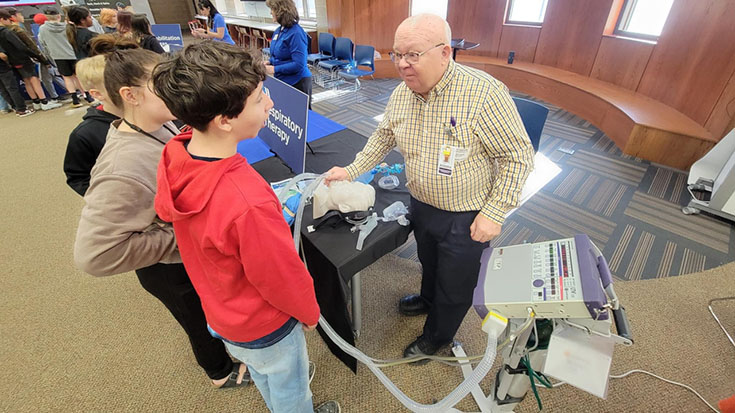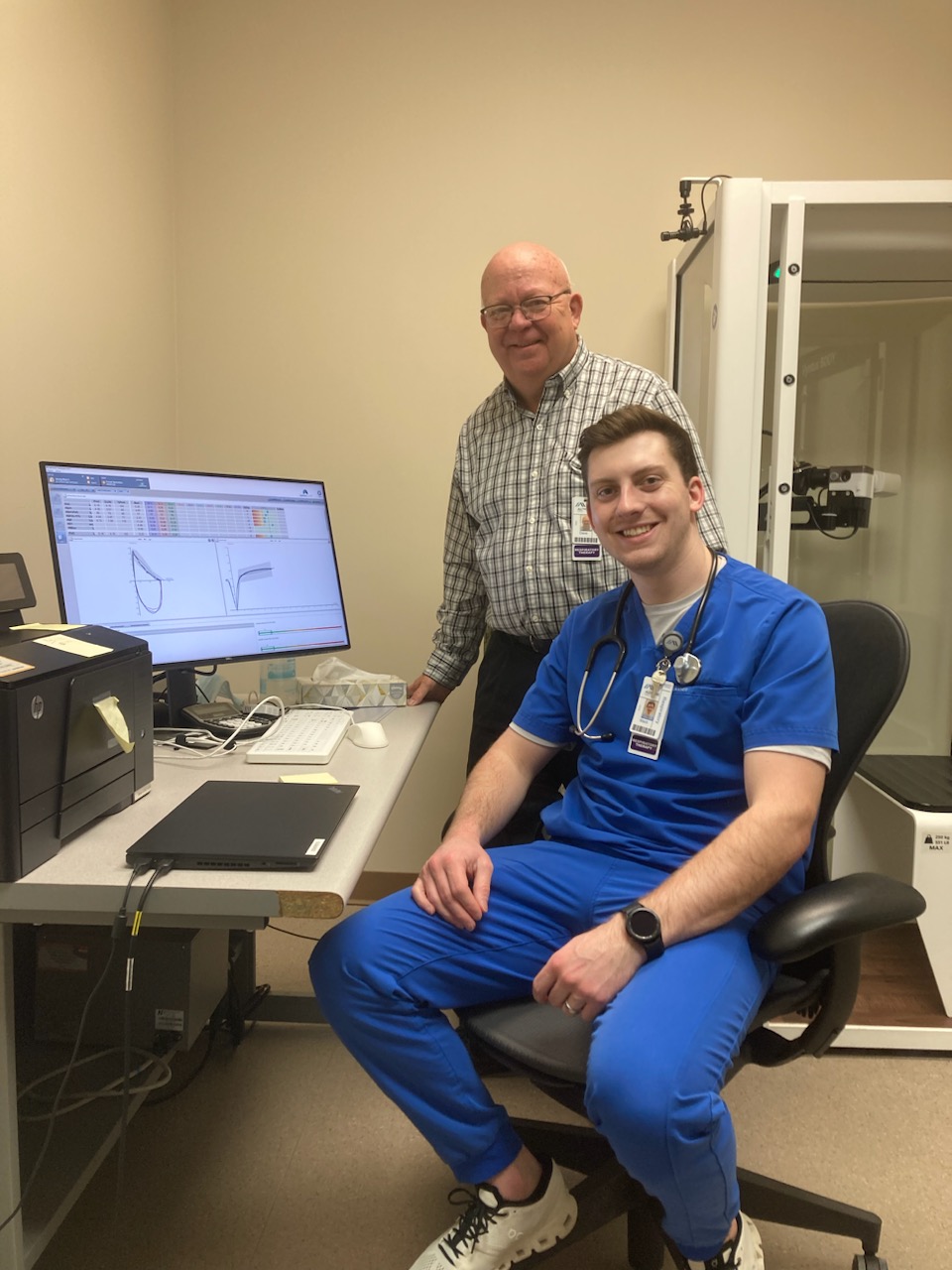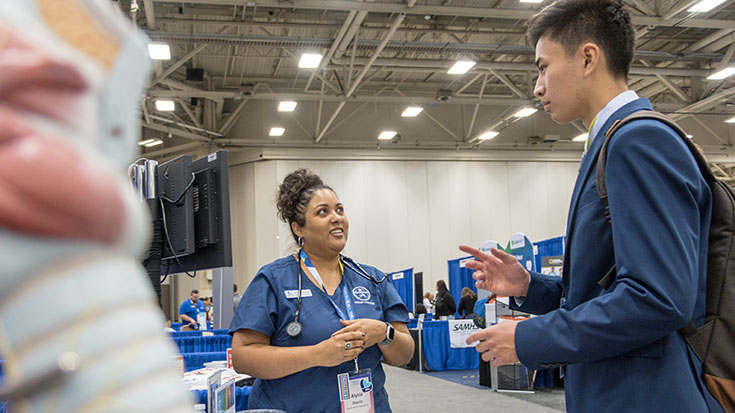
David Holm, RRT, had just finished two years at a local college and wasn’t sure what to major in when his dad, a high school teacher, told him about a relatively new profession called respiratory care that he had learned about when the HR director at the local hospital came to speak to kids at his school.
It was a high demand job and a great career option, said the HR director.
“My Dad suggested I contact the local hospital RT department and see if this would be an option for my career,” said Holm. “After a day of observation, I decided to apply for RT school.”
Thirty-seven years later he is director of cardiopulmonary services at Alomere Health in Alexandria, MN, and passionate about making sure other young people learn about the profession too.
Manpower shortage looms large
Recent statistics on the looming manpower shortage in respiratory care have spurred him to action. According to The State of Respiratory Therapy: 2021-2022 Report published by the AARC and Boston Scientific, 92,474 RTs are expected to leave the profession by 2030 and there has been a 27% decline in RC educational program enrollment since 2010.
“The difficultly of recruiting new RTs is at a crisis point,” said Holm. “I really believe if we don’t aggressively promote our profession we are going to lose the battle.”
It’s a battle he’s already fighting in his own facility.
“What I have learned after having a position open now for over two years is that we cannot just wait for people to find us,” he said. “With the great amount of RTs retiring in the near future we can’t continue to keep trying to steal RTs from other departments. We have to ‘grow our own.’”
The process starts, he continues, by reaching out to junior and senior high schools to make sure their students know RT is an option. “This is the time when young people are trying to decide career pathways,” said Holm. “How can young people ever find the RT profession if they don’t even know it exists? This is my motivation and passion, and will be until I retire.”
Long-standing relationship helps
Fortunately for him, Alomere Health has a long-standing relationship with the local schools that makes it easy to get involved. The hospital invites senior high students to come to the facility to tour the different departments every year, and even offers job shadowing opportunities to interested kids.
Holm and his colleagues are also invited into the schools themselves to present during health care career days. He says he sets up some “cool equipment” on his table and lets the students have some hands-on fun with it. “Just two weeks ago, we did this at the local junior high and it was a great success,” he said.
Perhaps the most exciting thing for professions like respiratory care that need more people, though, is the high school’s Health Care Academy, wherein students who know they want to pursue a career in health care can take classes toward that goal.
One of those classes covers airway management, and Holm works closely with the educators to explain the role of the RT in that process.
The hospital recruiter at Alomere Health works hard to get Holm and other clinicians in front of students at five smaller high schools in communities near Alexandria as well. “At each of these events I always invite students, if they are interested, to come and spend time job shadowing our RT department and see what RT really looks like,” said Holm.
Perseverance pays off
Holm says these efforts have yielded three new therapists for his department over the past two years, the newest being Mack Strong, RRT. “It has been so fun to see him go from an interested high school student to RT student, and eventually employed as a very talented RT,” he said.
 Dave Holm enjoys mentoring young people like Mack Strong into the profession.
Dave Holm enjoys mentoring young people like Mack Strong into the profession.Entering the profession has paid off for Strong in more ways than one too. According to Holm, Strong and his wife were struggling to find their first home when a long-time friend of Holm’s passed away in the hospital. When his widow told him she was planning to sell her house, he mentioned Strong was looking and the woman’s eyes lit up.
It turns out she was so impressed with the care Strong had delivered to her husband in his final days that she could think of nothing better than to sell to him and his young wife.
Clearly, getting involved in the local schools has paid off for Holm and the students who have taking advantage of the programs that are offered there. But he looks for young people to mentor into the profession wherever and whenever he sees an opportunity.
That was the case with another RT student set to graduate to December. “His story started when I was doing a PFT on his grandmother,” explained Holm. “She asked about our profession and I took advantage of it by passionately telling her about what a great career it has been for me.”
The grandmother then mentioned that she had a grandson who was getting ready to graduate from high school and speculated that RT might be something he would like. “I gave her my card and told her he could come and do a shadow day,” said Holm. Not long after, he got a call and a shadow day was set up.
“Blake came several more times to shadow and decided to go to RT school — and the rest is history,” said Holm.
If not us, who?
David Holm says he will continue to pour his time into the next generation of RTs for the rest of his career and he encourages other RTs to get on board as well.
“My message to my RT colleagues is very simple. If we don’t intentionally promote and recruit young people in the field of respiratory care, our profession will not survive,” he said. He believes it is every therapist’s duty to let the world know what a therapist is and does.
The upshot for the people who do get involved is immeasurable as well. “Once you start investing in the next generation, you won’t want to stop,” said Holm. “For me this has been the most rewarding part of my career.”
Email newsroom@aarc.org with questions or comments, we’d love to hear from you.
















